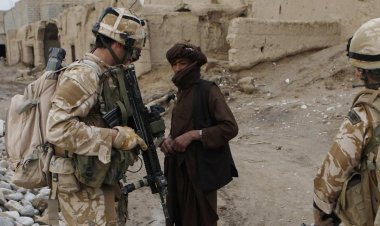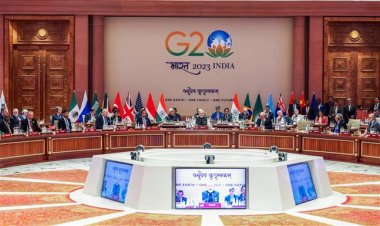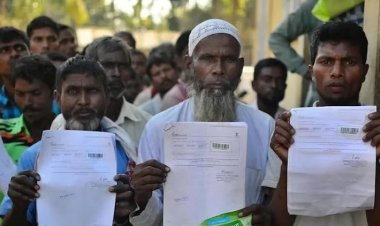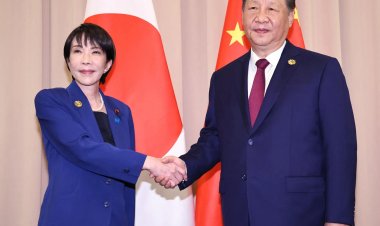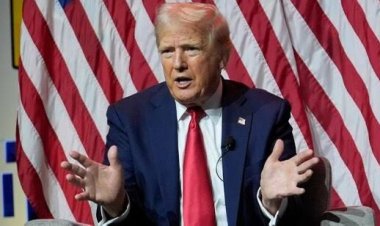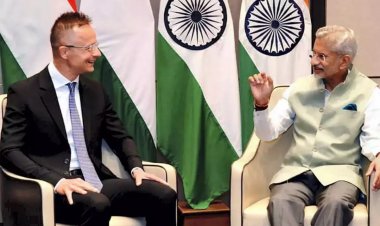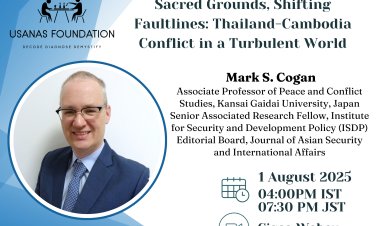Pak gearing up to foment civil unrest, terror attacks, communal riots in India
Pak security establishment’s frustration levels are soaring. The terrorist groups have been asked to unleash a reign of terror wherever they can and on the largest scale possible, including fidayeen attacks, assassinations, and spectacular hostage crises.
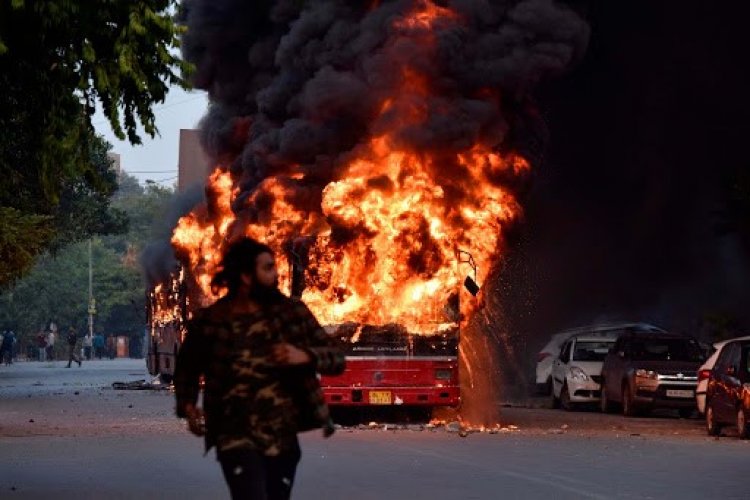
Commentary
By Abhinav Pandya
Unfortunately, the whole country seems to be busy with protests against the Citizenship Amendment Act (CAA) at a time when a dangerous, deceptive, and complex threat is lurking in the shadows. It has already begun manifesting; however, it remains elusive to our eminent strategic experts.
The threat this piece intends to highlight originates from Kashmir’s silence, post abrogation of Article 370. Kashmir’s silence may appear a tad perplexing, but not difficult to explain. The peace witnessed in Kashmir over the last six months is primarily due to tough security measures, impressive management of the civil administration after the Kashmir move, sense of fatigue with terrorism among the common people, pre-emptive arrests of the trouble-makers—mainstream politicians and Hurriyat leadership—ban on Jamaat and the NIA’s strict action against terror funding. However, India’s Kashmir move and the ensuing silence have shattered Pakistan’s establishment and particularly its deep-state, from within. They perceive it as an existential threat to their Kashmir project, which, in effect, means an existential threat to Pakistan army’s paramount position in the country.
Such fears are further strengthened by India’s top generals’, diplomats’ and politicians’ bold statements in the recent past about an offensive in Pakistan Occupied Kashmir (PoK). From India’s side, this may be classic psy-ops; nevertheless, Pakistan feels threatened and apprehensive of such a move. After the end of the special status of Kashmir, a decisive showdown over PoK between India and Pakistan emerges as a logical culmination of the terrorism of the last three decades. Pakistan feels pretty much sure about this. Its current concern is only about the timing of such an offensive.
The security mandarins in Pakistan know it well that once India acquires Rafale and the S-400 missile defence system, the odds will be heavily against Pakistan. If any escalation happens after India acquires them, then in all likelihood, the outcomes will be in India’s favour. According to the author’s informed interlocutors, India will not have its completely operational Rafale fleet before 2022. However, one squadron may be operational by March 2021. That said, it can be reasonably argued that Rawalpindi may want an escalation in the coming summers.
Further, many real-time developments are also indicating towards the realisation of the author’s forecast. Also, according to the author’s credible sources, Pakistan has installed advanced air defence systems and resistant Chinese bunkers in PoK. A major section in Pakistan’s defence establishment believes that Pakistan’s capabilities in an aerial warfare with its fleet of F-16 have the potential to outsmart India. They have also strengthened the second, third, and fourth lines of defences in PoK, which includes arming the civilians, settling the retired army personnel in PoK, and a sizeable army of highly radicalised Afghan jihadis. Besides, lately, Chinese soldiers have also been observed along with the Pakistan army’s patrol parties on the Line of Control (LoC). The Chinese are already entrenched in Gilgit-Baltistan. Credible intelligence sources have confirmed that Pakistan may involve China more in the affairs of PoK, to deter India from indulging in any offensive.
Strategic observers may recall Imran Khan’s UNGA speech in which he warned of a “blood bath” in Kashmir after the lifting of the curfews and a “nuclear Armageddon” in South Asia. While researching for his upcoming book on terror financing in Kashmir, this author interviewed some intelligence officials and some critical stakeholders in the terrorism of Kashmir. Those interviews suggested that Pakistan’s deep state and GHQ, Rawalpindi, prepared Imran Khan’s UNGA speech after taking concrete inputs and suggestions from a range of terrorist commanders of Kashmir-centric groups, United Jihad Council (UJC) leadership and the separatist leadership of Kashmir. All the entities mentioned here unanimously said that Kashmir would burn in hell fires after India relaxed the security clampdown—particularly in the coming summers.
Pakistan desperately wanted action in Kashmir, as it feared losing grip over the affairs of the state. Since nothing substantial has happened over the last six months despite intense efforts of infiltrating terrorists, organizing civil unrest and terror attacks, frustration levels are soaring in Pakistan’s security establishment. The terrorist commanders and UJC are bearing the brunt of this pressure from Pakistan’s deep state. The terrorist groups have been asked to unleash a reign of terror wherever they can and on the largest scale possible, including fidayeen attacks, assassinations, and spectacular hostage crises. Top-level operational commanders of Lashkar and Jaish have recently visited the IB (International Border) in the Pir Panjal area. It indicates the planning of something spectacular by LeT and Jaish.
What adds an interesting twist to the emerging developments is Pakistan’s smart information campaign against India. Right after Delhi’s Kashmir move, Pakistan repeatedly raised false alarm bells about the security and information lockdown, detentions of political leaders, and violation of human rights. Most of this exercise has relied upon exaggerated narratives, false pieces of information, and the circulation of fake videos, pictures and audio clips. Pakistan’s all-weather friend, Turkish President “Caliph-in-the-making,” Recep Tayyip Erdogan, also joined the bandwagon with presiding over the event, viz., “combating hate speech,”organised on the sidelines of the UN General Assembly in September 2019. Erdogan’s ranting against India mixed Kashmir with other issues such as sporadic incidents of lynching of Muslims for eating beef and his pain over the regime of the Hindu-nationalist BJP government, which he found, and rightly so, a major threat to his Islamist ambitions in India. Since then, Pakistan has quite successfully sold its sob story on Kashmir, cleverly spicing it with some of the recent developments in India, such as the Supreme Court’s decision in favour of Hindus in the Babri-mosque case and the passage of the Citizenship Amendment Act.
India scored a brilliant diplomatic victory over Pakistan after 5 August, successfully preventing any resolution in global diplomatic platforms. However, then came a dampener—Pakistan’s success in selling its sob story and fake narrative to the western media, human rights groups and liberal politicians. The wrong and baseless message that has gone to the western world is that some of the recent measures of the Narendra Modi-government are fascist and anti-Muslim to the extent that India’s single largest minority is facing the threat of extermination and persecution because of their religious beliefs. This has not only dented our image globally and hurt investment prospects, but also significantly alienated the overwhelming majority of Muslims in India.
Whether the Pakistan-Turkey combine built the narrative with a premeditated initiative to instigate communal riots, boost terrorism, and create civil unrest or not, may need further investigation. Nevertheless, it suits Pakistan’s geostrategic interests. The narrative built by Turkey-Pakistan has a distinct focus on religious identity, which has significantly radicalised young members of the minority community. The prolonged agitation at Shaheen Bagh and the recent Delhi riots are robust indications of foreign forces working with ulterior motives.
Imagine a situation in which a major terror attack planned and controlled by Pakistan-based handlers and executed by a local Kashmiri or any Indian Muslim happens in the coming months, leading to a casualty in double digits. In such a situation, Pakistan is likely to remind the world of Imran Khan’s UN speech and the different statements made on various occasions over the last six months—that they had already warned of a bloodbath because of India’s high handedness. Also, they might convincingly argue that it is the handiwork of a home-grown Muslim, radicalised due to the Modi government’s anti-Muslim policies.
Apart from compelling national interests, other reasons inducing heavy retaliation from India’s side may be the faltering economy and the need to shore up its political constituency against the hostile liberal-Islamist combine leading Shaheen Bagh. India has already set the standards of retaliation after Pulwama. Hence, Delhi cannot go a level down. The retaliation will have to be firm, decisive, and aggressive. It may lead to escalation, which Pakistan is likely to favor for the reasons mentioned earlier in this piece.
Further, Pakistan’s delusional generals also revel in the fanciful ideas of ordinary Kashmiris taking to the streets, in the event of escalation between India and Pakistan. It may appear as wishful thinking; however, one must remember the fact that discontentment is simmering in Kashmir in the lack of outreach and governance. Pakistan has already infiltrated many FTs, who are likely to act as mobilisers and coordinators in the absence of the separatist leadership, which is under detention.
If a civil rebellion like situation emerges, it will keep India’s security forces busy in suppressing the local revolt, killing civilians. A force fighting against its own people will find it challenging to thwart the Pakistan army for reasons more than obvious. Also, it will put India in a bad light, raising the moral pressure of the global diplomatic community on Delhi.
The strategic forecast discussed here may appear a bit far-fetched. However, it is firmly rooted in a logical and cross-disciplinary analysis of the emerging internal and external security scenario in the region. Hypothetically, if it results in reverses for India, then it may spark internal disturbances in the form of communal riots. Nevertheless, Pakistan’s vulnerability lies in its internal problems such as the Pashtun Tahafuz Movement, fragile civil-military relations, worsening economy, uncertainty over the emerging security and political situation in Afghanistan, and the Baloch resistance. A sincere effort to keep them occupied with the engagements mentioned here can always act as a “geostrategic speed-breaker”.
Abhinav Pandya is the author of “Radicalization in India: An Exploration” and Founder and CEO of Usanas Foundation.
Disclaimer: The paper is the author’s individual scholastic articulation and the facts and figures quoted are duly referenced, as needed, and are believed to be correct.
The Sunday Guardian published the original article.




